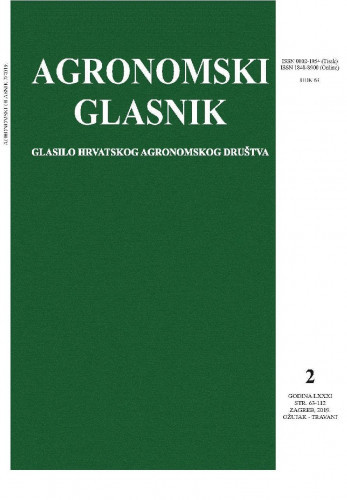Sesame (Sesamum indicum L.) is one of the oldest oilseed crops and important for high nutritional quality as well as medicinal value. Fifty diverse sesame genotypes were evaluated to study genetic variability. The results revealed that the genotypes were a significant variation in most of the studied characters. In all cases, the phenotypic variances were much higher than genotypic variances suggests a higher level of the environmental effect on the expression of these characters. The highest genotypic coefficient of variations (GCV) was observed in seed yield per plant while the highest heritability was exhibited by hundred seed weight followed by days to 80% maturity, pods per plant, number of branches per plant and seed yield per plant. The genotypic correlation with seed yield per plant showed a significantly strong positive with days to 50% flowering, plant height and number of pods per plant at both the genotypic and phenotypic level. The path coefficient analysis showed that pods per plant and seeds per pod were the most important contributing traits to seed yield. The 50 sesame genotypes were grouped into five clusters. The highest inter-cluster distance was observed between the cluster III and V while the lowest inter-cluster distance was observed between the cluster III and IV. Among 50 sesame genotypes G7, G36, G38 and G46 might be suggested for future hybridization program for the improvement of sesame yield.; Sezam (Sesamum indicum L.) je jedan od najstarijih usjeva uljarica i važan zbog visoke hranidbene kakvoće kao i medicinske vrijednosti. Procijenjeno je pedeset različitih genotipova sezama po genetskoj varijabilnosti. Rezultati su pokazali da su genotipovi značajna varijacija u većini proučavanih karakteristika. U svim slučajevima fenotipske varijance bile su mnogo više nego genotipske varijance što upućuje na višu razinu djelovanja okoline na izražavanje tih karakteristika. Najviši genotipski koeficijent varijacija primijećen je za prinos sjemena po biljki dok je najviša heretabilnost u težini sto sjemenki zatim po danima do 80% zrelosti, mahuna po biljci, broju granćica po biljci i sjemena po biljci. Genotipska korelacija s prinosom sjemena po biljci bila je značajno vrlo pozitivna s danima do 50% cvjetanja, visinom biljke i brojem mahuna po biljci na genotipskoj i fenotipskoj razini. Prema analizi koeficienata broj mahuna po biljci i prinos sjemena po mahuni bili su najvažniji doprinos prinosu sjemena. Pedeset genotipova sezama svrstano je u pet klastera. Najveća udaljenost među klasterima primijećena je između klastera III i IV. Među 50 sezama genotipovi G7, G36, G38 i G46 mogu se predložiti za budući program hibridizacije za poboljšanje prinosa sezama.
Sažetak

 Agronomski glasnik : glasilo Hrvatskog agronomskog društva : 81,2(2019) / glavni i odgovorni urednik, editor-in-chief Ivo Miljković.
Agronomski glasnik : glasilo Hrvatskog agronomskog društva : 81,2(2019) / glavni i odgovorni urednik, editor-in-chief Ivo Miljković.